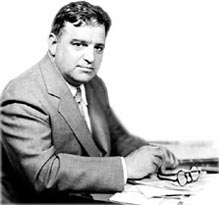The American Diabetes Association (ADA) made it clear they were in favor of embryonic stem cell research. The current US administration agreed and lifted a ban on the research imposed by former president George W. Bush.
The American Diabetes Association (ADA) made it clear they were in favor of embryonic stem cell research. The current US administration agreed and lifted a ban on the research imposed by former president George W. Bush.
R. Paul Robertson, MD with the ADA said, “The ethical use of stem cell research holds the promise of accelerating medical advancements in many fields. This brings hope to the nearly 24 million American adults and children with diabetes who face its many complications including heart disease, amputation, and blindness.”
Whatever impact may ultimately develop from this news may not be felt for several years. Standard safety concerns need to be addressed in each potential study on the stem cells. Scientific examination is also required in many cases.
Several billion dollars have already been dedicated by private parties to the establishment of stem cell research along with facilities where advances may be studied. The change in policy could open up federal funding for stem cell research, but that will be up to congress. Some suggest this is the best way to accelerate therapies using stem cells.
Opponents of the policy argue embryonic stem cell research sacrifices one life for the potential benefit of another. As noble a gesture as that may be there are those that find the idea repugnant. In turn they will cite advances in adult stem cell therapies that have also yielded hope and promise. They voice concern that while adult stem cell research has provided answers this has not been the case with embryonic stem cells to this point.
While this argument may have merit the counter argument will be that by opening stem cell research up to embryonic stem cells it may be possible to accelerate potential new treatment options.
One of the reasons embryonic stem cells are viewed as a potential winner is that researchers are convinced they are much more adaptable to the type of cells they will need to replace.
Forbes.com reported, “Scientists have yet to perfect the implantation of cells and tissues derived from embryonic stem cells. The problem, says Dr. Reijo Pera, is that cells derived from embryonic stem cells have the potential to transform into another type of cell–even a malignant one.”
The last sentence will be the issue science will need to master. If, for instance, a patient is treated for diabetes using embryonic stem cells and those cells morph into cancer the patient will not likely view the therapy as an acceptable trade off.
Forbes.com also stated, “President Obama is leaving Congress to decide whether federal funding should be used to experiment on embryos, which has been banned since 1996. Until President Bush issued his executive order in 2001, the restrictions prevented embryonic stem cell research because the extraction of stem cells destroys an embryo. Congress will have to act on the controversial issue if it begins to hinder embryonic stem cell research.”
Ethical questions surrounding this new development will likely linger, but it has served to open new dialogue and has medical science excited about virtually any kind of stem cell research that can improve the quality and length of life of patients.
Prior to president Obama’s change in policy there had been strides in embryonic stem cell research that offered potential therapies for a variety of medical conditions including diabetes. Due to multiple factors those potential therapies hadn’t moved beyond the ‘potential’ category. Several questions remain, but the policy change has ignited the medical community as they look at new ways to help their patients.
 Jack Benny was born Benjamin Kubelsky in 1894. He was a native of Chicago, Illinois. Benny was a successful comedian, TV, stage and radio actor. He became a nation icon with a radio program called the Jack Benny show. Benny was a character actor. He was famous for his personality and the method in which he represented himself. Benny had various variety shows that situated sketched comedy. He invited many guests to his shows including Jimmy Stewart, George Burns and Orson Wells. His performances are still talked about to this day. Benny was a genius comedian and is missed by his friends and fans alike. Jack Benny died in 1974 of pancreatic cancer. He was 80 years old.
Jack Benny was born Benjamin Kubelsky in 1894. He was a native of Chicago, Illinois. Benny was a successful comedian, TV, stage and radio actor. He became a nation icon with a radio program called the Jack Benny show. Benny was a character actor. He was famous for his personality and the method in which he represented himself. Benny had various variety shows that situated sketched comedy. He invited many guests to his shows including Jimmy Stewart, George Burns and Orson Wells. His performances are still talked about to this day. Benny was a genius comedian and is missed by his friends and fans alike. Jack Benny died in 1974 of pancreatic cancer. He was 80 years old. was born in 1882, a native from New York, New York. Many people may not recognize the name. Nevertheless, he was the Mayor of New York City during the
was born in 1882, a native from New York, New York. Many people may not recognize the name. Nevertheless, he was the Mayor of New York City during the  Anne
Anne  Ingredients
Ingredients The Perfect Low Carb Barbeque Sauce: A low or no carb diet can be difficult to stick to. The limitations on the types of
The Perfect Low Carb Barbeque Sauce: A low or no carb diet can be difficult to stick to. The limitations on the types of  Pork Tenderloin with Roasted Garlic Mayonnaise
Pork Tenderloin with Roasted Garlic Mayonnaise